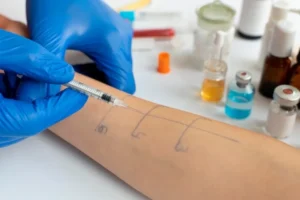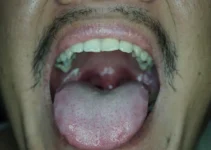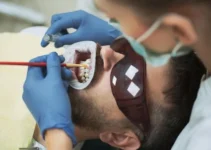Plasma Rich in Growth Factors (PRGF) extraction follows a precise protocol developed by BTI Biotechnology Institute. The process begins with drawing a small amount of the patient’s blood, which is then centrifuged under specific conditions to separate different components. This controlled centrifugation creates distinct layers, with the PRGF fraction containing a concentrated amount of growth factors being carefully isolated. The preparation requires strict adherence to temperature, timing, and handling protocols to ensure the highest quality and therapeutic potential of the final product.
Understanding Plasma Rich in Growth Factors (PRGF)
Plasma Rich in Growth Factors (PRGF) represents a groundbreaking advancement in regenerative medicine, utilizing the patient’s own biological materials to promote healing and tissue regeneration. This innovative technology, developed by BTI Biotechnology Institute, has revolutionized various medical fields, particularly in dentistry and oral surgery. The scientific foundation of PRGF lies in its ability to harness and concentrate the natural healing properties present in our blood. Recent developments in PRGF technology have demonstrated its remarkable versatility in medical applications. Studies have shown that PRGF contains a precise concentration of growth factors that can accelerate tissue healing and regeneration. Unlike traditional treatment methods, PRGF offers a personalized approach to tissue regeneration, as it’s derived from the patient’s own blood, eliminating the risk of immune reactions or disease transmission.
The medical applications of PRGF extend across multiple disciplines, including:
- Dental implantology and oral surgery
- Orthopedics and sports medicine
- Dermatology and wound healing
- Ophthalmology
- Tissue engineering
What is PRGF?
PRGF is a highly specialized autologous plasma preparation that contains specific proteins and growth factors essential for tissue regeneration. Unlike other platelet concentrates, PRGF is characterized by its controlled and reproducible preparation protocol, which yields a product free from inflammatory components. The key distinction lies in its precise concentration of platelets and absence of leukocytes, which can potentially interfere with healing processes.
The biological properties of PRGF are attributed to its rich content of growth factors, including:
- Platelet-Derived Growth Factor (PDGF)
- Transforming Growth Factor-β (TGF-β)
- Vascular Endothelial Growth Factor (VEGF)
- Epidermal Growth Factor (EGF)
- Insulin-like Growth Factor (IGF)
Scientific research has demonstrated that PRGF differs significantly from other platelet concentrates due to its standardized preparation protocol and specific biological characteristics. The absence of leukocytes and pro-inflammatory components makes it particularly suitable for therapeutic applications requiring controlled tissue regeneration.
Components and Characteristics
The main components of PRGF include a carefully calibrated concentration of platelets, plasma proteins, and growth factors. The preparation process ensures a platelet concentration that is optimal for therapeutic effects without reaching levels that could potentially inhibit healing. Research has shown that PRGF contains approximately 2-3 times the baseline platelet concentration, which is considered ideal for tissue regeneration.
Key characteristics of PRGF include:
- Controlled platelet concentration (2-3x baseline)
- Absence of leukocytes
- Presence of plasma proteins
- Reproducible preparation protocol
- Multiple therapeutic formulations
The unique composition of PRGF allows for various therapeutic formulations, including liquid, clot, and membrane forms. Each formulation is specifically designed to meet different clinical needs and can be adapted to various medical applications. The versatility of these preparations has been extensively documented in numerous clinical studies and scientific publications.
If you’re interested in learning more about regenerative medicine and advanced therapeutic approaches, we invite you to explore our other articles on tissue engineering, growth factors, and innovative medical technologies. Understanding these cutting-edge treatments is crucial for both medical professionals and patients seeking the most effective therapeutic options.
Required Materials and Equipment
The preparation of Plasma Rich in Growth Factors (PRGF) requires specific medical-grade equipment and materials to ensure optimal results and patient safety. The process demands strict adherence to protocols and the use of certified materials that meet international quality standards.
Quality control in PRGF preparation is paramount, as the final product will be used in various therapeutic applications. All materials must be sterile and biocompatible, and the equipment must be properly calibrated and maintained according to manufacturer specifications.
Laboratory Equipment
The laboratory setup for PRGF preparation requires several essential pieces of equipment. The workspace must be equipped with a certified biological safety cabinet to maintain sterile conditions throughout the preparation process.
Key laboratory equipment includes:
- Laminar flow hood for sterile processing
- Temperature-controlled storage units
- Precision pipettes and calibrated measuring devices
- Sterile work surfaces and processing areas
- pH meters and monitoring equipment
Centrifuge Specifications
The centrifuge is the cornerstone equipment in PRGF preparation. It must meet specific requirements, including the ability to maintain precise speeds between 580g and 600g and temperature control capabilities. The equipment should feature digital controls and safety mechanisms to ensure consistent processing conditions.
Essential centrifuge specifications include:
- Adjustable speed controls (100-3000 RPM range)
- Temperature regulation (18-22°C)
- Digital timer with precise interval settings
- Balanced rotor design for multiple tube processing
Collection Materials
Blood collection materials must be of the highest quality to ensure sample integrity. The process requires specialized collection tubes containing specific anticoagulants designed for PRGF preparation.
Essential collection materials include:
- Sodium citrate tubes (3.8% concentration)
- Sterile blood collection needles
- Vacuum tube holders
- Sterile transfer pipettes
- Processing containers and activation tubes
Storage Requirements
Proper storage conditions are crucial for maintaining the integrity of both materials and processed PRGF. All components must be stored in temperature-controlled environments with continuous monitoring systems.
Critical storage parameters include:
- Temperature range of 2-8°C for collected samples
- Humidity control below 60%
- Protection from direct light exposure
- Sterile containment systems
For more detailed information about PRGF preparation techniques and clinical applications, we invite you to explore our related articles on regenerative medicine and advanced therapeutic procedures.
Blood Collection Process
The blood collection process for PRGF preparation is a crucial initial step that requires precise protocols and careful handling. This autologous preparation begins with the extraction of a small volume of the patient’s blood, typically between 20-40ml depending on the intended application and treatment area.
The collection process must be performed under strict aseptic conditions using specialized tubes containing a specific sodium citrate anticoagulant. These tubes are designed to preserve the biological properties of platelets and ensure optimal growth factor release during the subsequent preparation phases. Quality control during blood collection is essential, as factors such as hemolysis or inappropriate handling can significantly impact the final PRGF product’s effectiveness. The collected blood must be processed within maximum of 4 hours after extraction to maintain its therapeutic properties.
Patient Preparation
Before blood collection, patients must follow specific guidelines to ensure optimal PRGF quality. It’s recommended to maintain normal hydration levels and avoid heavy meals for at least 4 hours before the procedure. Patients should also inform healthcare providers about any medications they are taking, particularly anticoagulants.
The following preparations are essential for optimal results:
- Avoid smoking for at least 12 hours before collection
- Maintain regular sleep patterns the night before
- Avoid strenuous exercise 24 hours prior to collection
- Stay well hydrated by drinking water regularly
Healthcare providers should conduct a brief medical history review and verify that patients meet all necessary health requirements for the procedure. This includes checking for any contraindications or conditions that might affect blood collection.
Collection Guidelines
The blood collection procedure follows strict guidelines to ensure sample quality and patient safety. The process begins with proper patient identification and verification of the collection tubes. The venipuncture site must be carefully selected and prepared using standardized antiseptic techniques.
Key technical aspects include:
- Use of 21G or 23G butterfly needles for minimal cellular damage
- Gentle tube inversion (4-6 times) to ensure proper anticoagulant mixing
- Maintenance of proper tube filling levels
- Immediate labeling and handling of specimens
The collected blood should be handled with care to avoid mechanical damage to platelets. Temperature control is crucial, and samples should be maintained at room temperature (20-22°C) during the entire process. Proper documentation of collection time and conditions is essential for quality assurance.
Understanding these precise collection guidelines is crucial for healthcare professionals involved in PRGF therapy. For more detailed information about subsequent processing steps and clinical applications, we encourage you to explore our related articles on PRGF activation and therapeutic applications.
PRGF Preparation Protocol
The Plasma Rich in Growth Factors (PRGF) preparation follows a strictly controlled protocol that ensures the highest quality and therapeutic potential. The process begins with the collection of the patient’s blood using specific citrate-containing tubes designed to prevent coagulation. It’s crucial to note that the entire procedure must be performed under sterile conditions in a controlled environment.
The preparation protocol involves several critical steps that must be followed precisely to obtain optimal results. These include:
- Blood collection using specialized tubes
- Careful temperature control (20-26°C)
- Precise centrifugation parameters
- Sterile fraction separation
- Activation process when required
Research has shown that the success of PRGF therapy heavily depends on the standardization of the preparation protocol. Studies published in the Journal of Biomedical Materials Research have demonstrated that even minor variations in the protocol can significantly affect the concentration and viability of growth factors.
Centrifugation Process
The centrifugation process represents the cornerstone of PRGF preparation. This step employs a specific centrifugal force that separates blood components based on their density gradient. The process must be performed in a calibrated centrifuge specifically designed for this purpose.
Temperature control during centrifugation is crucial, as variations can affect protein stability and growth factor integrity. The optimal temperature range has been established between 20-26°C through extensive research and clinical validation.
Speed and Time Settings
The centrifugation parameters are precisely defined to achieve optimal separation. The process typically requires a speed of 580g for 8 minutes, although these parameters may vary slightly depending on the specific PRGF system being used. It’s essential to maintain consistent settings as validated by clinical studies.
Research has shown that these specific parameters result in the most effective separation of blood components while preserving the integrity of platelets and growth factors. Higher speeds or longer durations can lead to platelet damage and reduced therapeutic efficacy.
Fraction Separation
After centrifugation, the blood separates into distinct layers, each with different therapeutic properties. The PRGF fraction is located just above the buffy coat layer, containing an optimal concentration of platelets and growth factors. Proper identification of these layers is crucial for successful collection.
The separation process results in the following layers from bottom to top:
- Red blood cells (bottom layer)
- Buffy coat (thin white layer)
- PRGF fraction (golden yellow layer)
- Platelet-poor plasma (top layer)
Collection Techniques
The collection of PRGF requires precise pipetting techniques using sterile materials. The process involves carefully extracting the appropriate fraction while avoiding contamination from adjacent layers. Visual guidance and steady hands are essential for accurate collection.
Practitioners must maintain a careful balance between maximizing collection volume and ensuring purity. Studies have shown that proper collection technique can yield PRGF with platelet concentrations 2-3 times higher than baseline blood levels, which is optimal for therapeutic applications.
For more detailed information about PRGF applications and clinical outcomes, we encourage you to explore our related articles on regenerative medicine and tissue engineering. Our comprehensive resource library contains valuable information about the latest advances in PRGF technology and its therapeutic applications.
Quality Control and Storage
The effectiveness of Plasma Rich in Growth Factors (PRGF) therapy heavily depends on maintaining strict quality control measures throughout the preparation and storage process. Research has shown that proper handling and storage protocols are crucial for preserving the biological activity of growth factors and ensuring optimal therapeutic outcomes.
Quality control in PRGF preparation involves multiple critical checkpoints, including platelet concentration verification, sterility maintenance, and precise activation timing. Studies indicate that the therapeutic window for PRGF application is optimal when platelet concentrations fall within 2-3 times baseline levels.
Modern PRGF protocols incorporate sophisticated monitoring systems and standardized procedures to maintain consistency across preparations. The process must be conducted in controlled environmental conditions with regular validation of equipment and materials used.
Quality Assessment
Quality assessment of PRGF preparations involves several key parameters that must be carefully monitored:
- Platelet concentration verification using automated cell counters
- Growth factor quantification through ELISA testing
- Sterility testing using standardized microbiological techniques
- pH monitoring and protein content analysis
Research has demonstrated that optimal therapeutic results are achieved when PRGF preparations maintain specific quality benchmarks. The concentration of key growth factors, including PDGF, TGF-β, and VEGF, should fall within established therapeutic ranges validated by clinical studies.
Regular quality assessments should be performed using standardized protocols to ensure consistency between preparations. Documentation of these assessments is crucial for maintaining regulatory compliance and ensuring therapeutic efficacy.
Storage Protocols
Proper storage of PRGF preparations is essential for maintaining their biological activity. Research indicates that temperature control is particularly critical, with optimal storage conditions typically ranging between 2-8°C for short-term storage.
The shelf life of PRGF preparations varies depending on several factors:
- Activated PRGF should be used within 4 hours of preparation
- Non-activated preparations can be stored for up to 8 hours at room temperature
- Frozen storage at -20°C can extend viability for up to 6 months
Studies have shown that proper storage conditions can significantly impact the preservation of growth factor activity. Temperature fluctuations should be minimized, and exposure to light should be limited to maintain optimal therapeutic potential.
If you’re interested in learning more about advanced regenerative therapies and biological preparations, we invite you to explore our other articles on platelet-rich plasma applications and regenerative medicine protocols.
Essential Guide to Obtaining Plasma Rich in Growth Factors (PRGF)
Understanding the process of obtaining Plasma Rich in Growth Factors is crucial for both medical professionals and patients. Here are the most common questions about the PRGF preparation process and its steps.
What is the basic process to obtain PRGF?
The process begins with drawing a small amount of the patient’s blood. This blood is then centrifuged at a specific speed to separate the plasma rich in growth factors from other blood components. The resulting PRGF is then carefully extracted and prepared for therapeutic use.
How long does the PRGF extraction process take?
The complete process typically takes between 15-30 minutes. This includes blood collection, centrifugation, and preparation of the final PRGF product. The procedure is performed in a clinical setting under sterile conditions.
What equipment is needed to prepare PRGF?
The essential equipment includes sterile blood collection tubes, a calibrated centrifuge specifically designed for PRGF preparation, pipettes for plasma extraction, and activation agents. All materials must meet strict medical standards to ensure safety and effectiveness.




